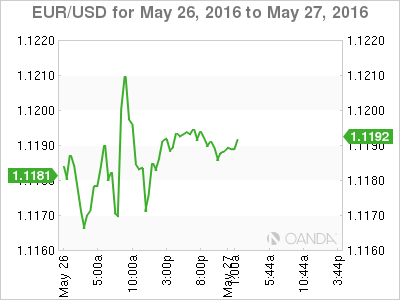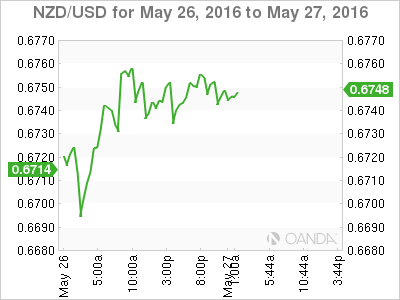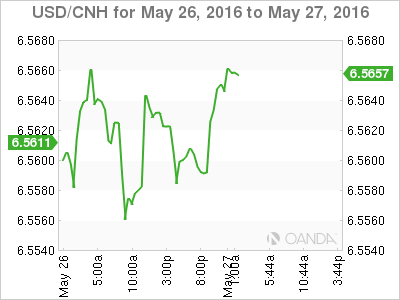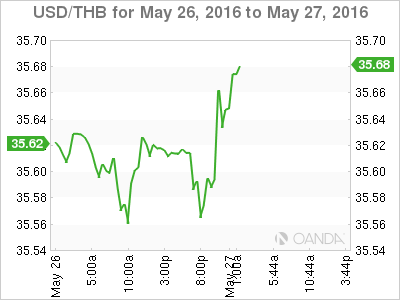After two days of solid bull runs, global equity markets consolidated on Thursday. This retrenchment was not too surprising as traders pare down risk ahead of long weekends in both US and the UK.
Aussie dollar – choppy yet resilient
With the WTI front month contract breaking above the psychological USD$50 a barrel mark, a wave of commodity currency buying erupted. Once again the Aussie dollar showed its resilience in the face of weaker economic headlines and expected monetary policy divergence between the Fed and the RBA.
Oil prices were not the only reason we bounced off yesterday’s Capex induced gap to 0.7150-60. After the initial reaction to the weaker Capex headline, the Aussie quickly found a solid base as spending guidance for 2016-2017 in the non-mining sector was better than expected at 89.2 billion, a significant metric for GDP.
Overall, the USD is taking corrective respite as traders take a cautious stance ahead of Fed Chair Janet Yellen’s critical speech later today. Given the not-so-distant Fed flip-flop’s, on the back of external headwinds, US dollar bulls will be looking at tonight’s speech for a solid endorsement that a summer rate hike is on the cards, before taking the dollar higher. But with numerous key Fed voting members supporting multiple rate hikes for the remainder of 2016, it’s highly unlikely Yellen will throw a wrench into the works. So, we should expect the Fed Rate Hike drum to continue resonating.

Kiwi dollar – mixed messages for the flightless bird
The kiwi dollar has endured a bumpy ride over the past 24 hours, which saw a significant sell-off below 0.6700, only to recover on a wave of oil-induced commodity currency euphoria. Also, while the miss in GDT is dreadful news for the Kiwi, and should limit its short-term upside potential, the Kiwi did manage to fill the Fonterra gap overnight on the back of surging commodity prices. But keep in mind this is the lowest opening forecast since 2009/2010.
However, at the Asia open, newsreaders were ablaze with comments from Finance Minister Bill English, who said the New Zealand government is in talks with the RBNZ to introduce new macro-prudential tools. This move holds the door ajar for an additional RBNZ rate cut. The Kiwi immediately gapped lower in thin liquidity only to rebound after initial comments were then expanded on to include “English says NZ economy does not need stimulating’’

Yen – traders scratching their heads
While traders are extremely sensitive to news headlines, occasionally they react aggressively for no apparent reason. This was the case for USD/JPY entering yesterday’s Tokyo Fixing. USD/JPY fell out of bed dropping some 60 pips in a second without any rhyme or reason. This left traders still scratching their heads this morning trying to figure out the rationale behind the move. But given the proximity of the Tokyo fix to the USD/JPY sell off, chalk the random walk run to a one-off high volume order hitting the market. However, overall price action has been very inconsistent as momentum continues to hesitate in either direction within the 109.45-110.45 strong short term support and resistance. With the G7 leaders meeting this weekend we can only expect the range bound markets to persist.
On the data front, today’s Japan APR National CPI came in -0.3% versus -0.4 % expected, raising more questions than answers about the elusive BoJ’s 2% inflation target. We need to keep an eye on the rhetoric and follow-up headlines in G7 meeting aftermath, especially in the wake of Abe comments reigniting memories of ‘’Too Big To Fail” when he was quoted “warning of the re-emergence of a Lehman-scale crisis”. While most will look at this as justification to postpone the consumption tax hike, these overripe comments can quickly send the market into a tailspin.
While the full text of the G-7 statement is not yet available, USD/JPY is moving back towards 110 perhaps on speculation Abe’s aggressive overtones won the day for making a case of additional BoJ stimulus.
In early APAC trade, price action remains erratic, lacking any clear direction. A typical Friday morning ahead of US and UK long weekends with potentially high-risk events looming, so let the games begin.

Yuan – volatile ride ahead?
We can all agree that the PBOC was attempting to move away from a strictly USD peg to prepare for 2016 US rate hikes. But it’s also apparent that the PBOC has a tight grip controlling the speed of depreciation on the yuan. On the one hand, when the USD weakens the yuan peg follows. However, when the USD is firmer, the yuan peg resorts to the basket mechanism to smooth out the inevitable CNY depreciation and slow the pace of capital outflows.
The Fed is making overtones suggesting a path towards normalising monetary policy, which is coupled with the likelihood that additional PBOC stimulus will be required to reignite mainland China’s economy. So the big question should be how does the PBOC manage the inevitable so as not to disrupt the domestic equity market and possibly spread a massive risk-off environment to global markets? I think we will likely be in for a very volatile ride if the Fed moves to a path of interest rate normalisation.
USD/CNY fix comes at 6.5490 versus 6.5552 yesterday, right on top of market expectations.

The relatively hawkish comments for the Bank of Thailand governor had temporarily capped the recent THB sell-off when he stated weakness in exports should be temporary. Also helping THB sentiments were the gains in other Asian currencies on the back firming equities and rising oil prices. I think we’re seeing a reaction to broader US moves overnight as traders pare back speculative long USD positions.

MYR
The ringgit rebounded on the back of firming oil prices overnight as external factors continue to drive sentiment. USD has given back some of this week’s gains, not surprising as traders prepare for a long weekend which may be full of market sensitive news headlines as the G7 leaders continue meeting over the weekend.
